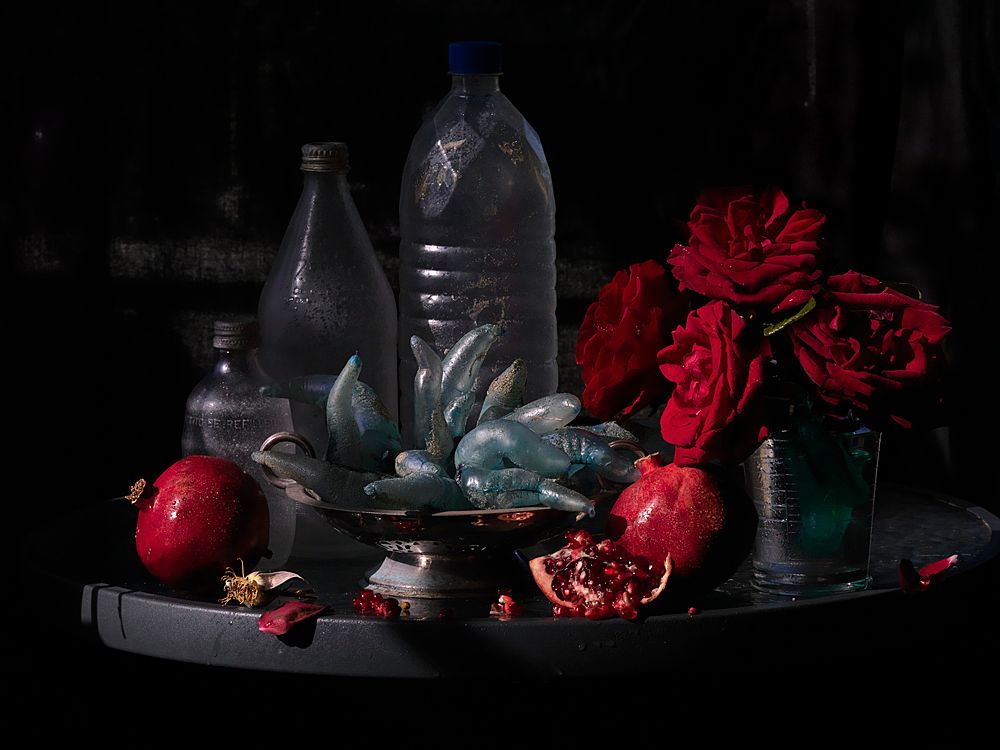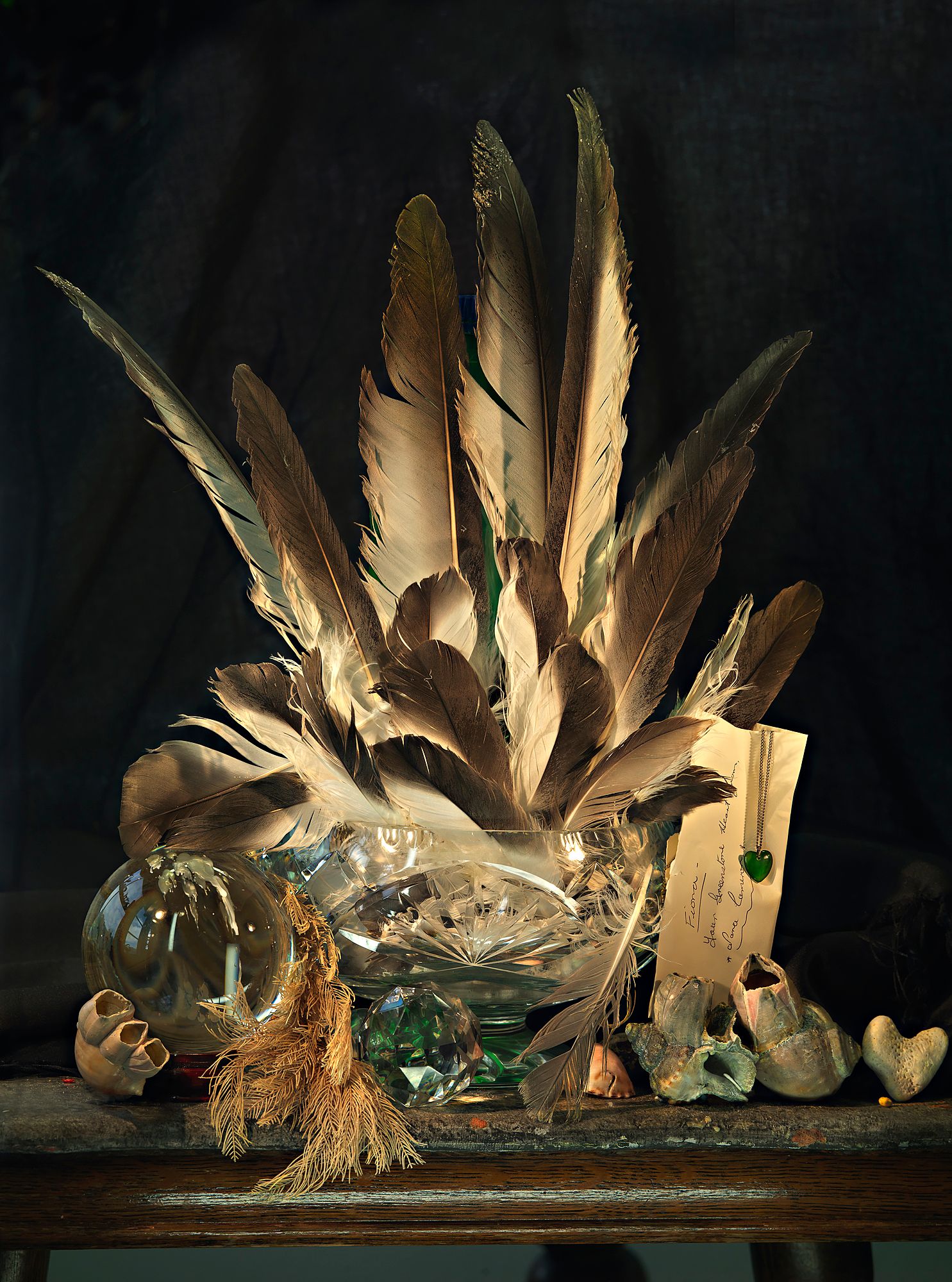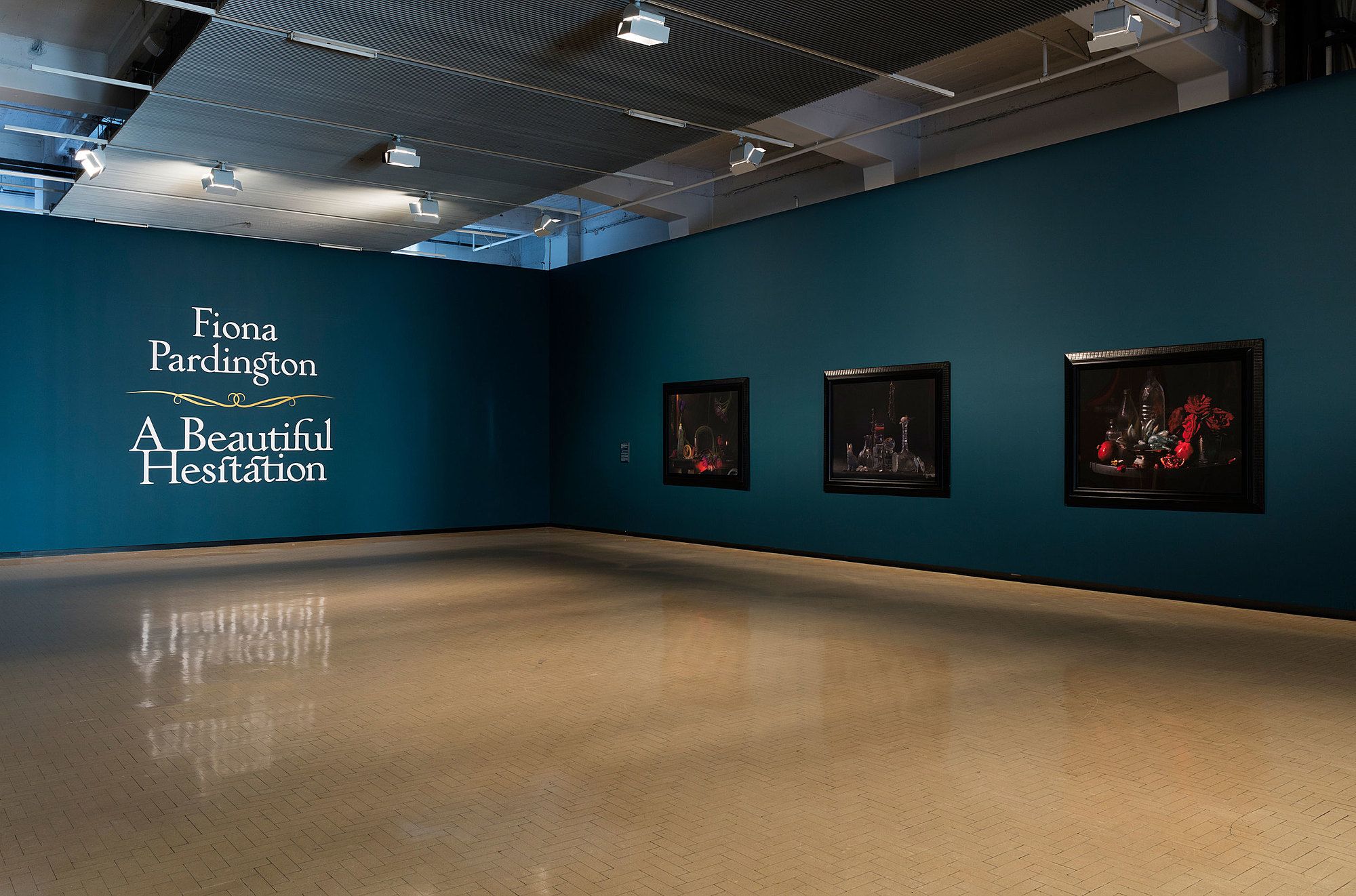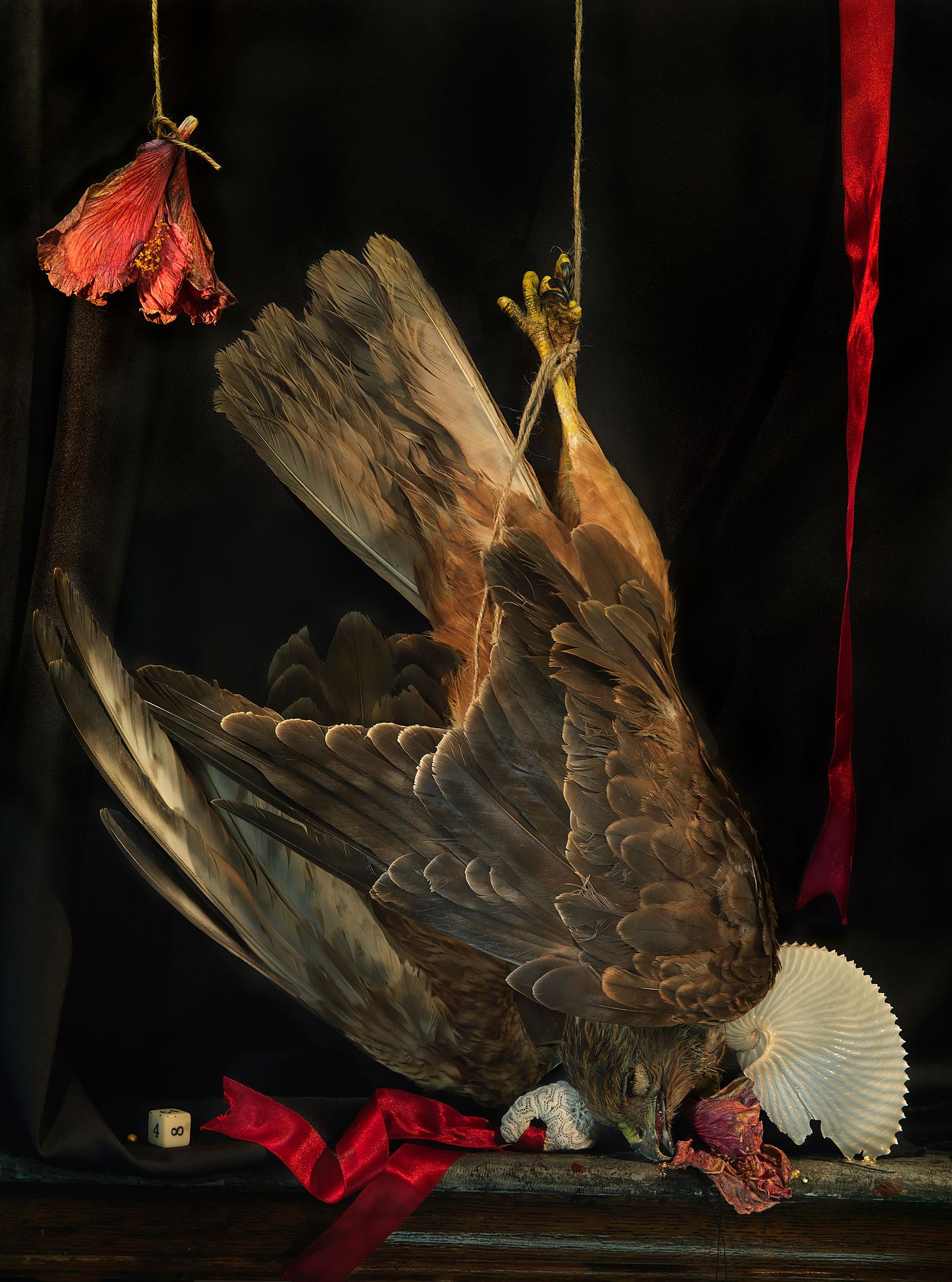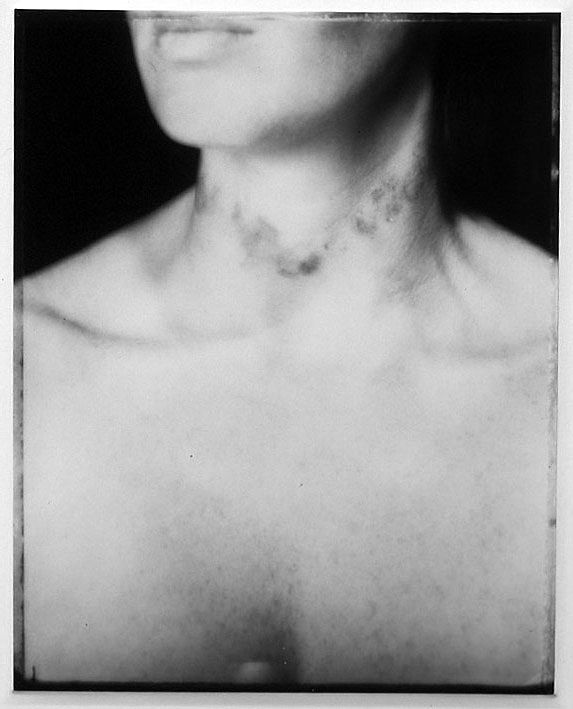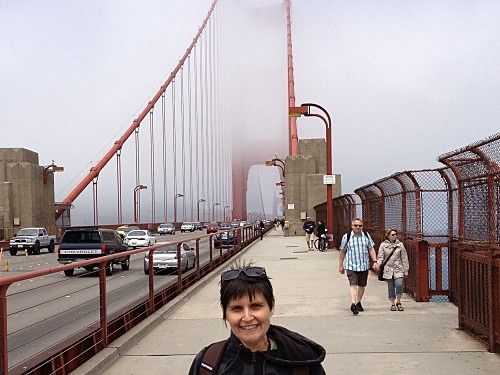A Beautiful Hesitation: An Interview with Aaron Lister
Opening at Auckland Art Gallery this month, A Beautiful Hesitation surveys more than thirty years of Fiona Pardington’s career. Pip Adam chats to the exhibition’s curator, Aaron Lister, about the show's development and why it's happening now.
A Beautiful Hesitation is the largest exhibition of photographer Fiona Pardington’s work to date. With over a hundred photographs spanning thirty years of practice, the show provides a unique opportunity to trace relationships across Pardington’s work that may not have been immediately obvious in previous exhibitions. “In all her work,” says the exhibition’s curator, Aaron Lister, “the personal and the political – and ways of looking and being – are forcefully intertwined.”
Ahead of the show opening at Auckland Art Gallery and the launch of its accompanying book, we talk to Aaron Lister about the subverting power of Fiona’s work and the importance of the show.
Pip Adam: Is A Beautiful Hesitation a retrospective of Fiona Pardington’s work?
Aaron Lister: No, I’d shy away from the word ‘retrospective’. Retrospectives always feel like an end point – full stop, there’s nothing more to see here – and this is definitely not the case with Fiona’s work. We even shy away from calling A Beautiful Hesitation a survey even though it’s clearly a survey, because I think even ‘survey’ carries these associations.
Retrospectives always feel like an end point – full stop, there’s nothing more to see here – and this is definitely not the case with Fiona’s work.
Fiona’s practice is still very much in motion. That’s what the exhibition is trying to draw out – to keep these possibilities in motion in the past work, in the current work and in what’s coming next. Shying away from these terms gives us more freedom to play in terms of exhibition structure and what we’re trying to do.
I wouldn’t want to do a retrospective of anyone.
Which raises a question, Why this exhibition now?
The exhibition’s been a long slow burn. It’s probably been on the books for about four years, as long as I’ve been at City Gallery. It’s been slowly developed, through the odd email, the odd conversation, the odd studio visit. In terms of Fiona’s practice, a survey could have happened five years ago, ten years ago or five years from now. That’s why I think those definitions around ‘retrospective’ are tricky. The timing just felt right.
When we first started talking about the exhibition, [Fiona] had just released the big Ahua series out to the world at the Sydney Biennale, and I saw that and thought, ‘Woah, this is a different Fiona than the Fiona I know. This is amazing that she’s in the midst of this huge project. It’s not the right time for the type of show we had been talking about.’ So we just waited for that project to play out a little bit and then a couple of other projects came up and we thought, ‘Let’s wait until these are finished.’ So eventually there came a time when those projects had elapsed a little and settled, and new things were opening up – it felt like a good moment. She’d been making Still Lifes for about three or four years and that project seemed to have hit a point of completion or near completion, so there was this new body of work pulsating away, and it felt like now was the time to take that wider view across her practice.
The Still Lifes are actually really key to my thinking about the exhibition because they have – even unconsciously – a survey function. In them, Fiona’s pulling together all of her earlier concerns, reusing objects from earlier photographs, bringing together ideas that have preoccupied her for ages. So it was really helpful for me to have those works circulating in my head while I was thinking through what a survey show could do. To have the Still Lifes and think, ‘Oh, she’s bringing that and that together to do that’.
I think that was reflected in the central place the Still Lifes took in the Wellington City Gallery incarnation of A Beautiful Hesitation. This exhibition is going to tour to Auckland Art Gallery and Christchurch Art Gallery. What’s it like to know that you’re curating something that will sit in different physical spaces?
Yeah, it’s complex. I often start with a space and the spatial experience of work, so I always conceived of a show in relation to our spaces. The fact that we could spread the show over three distinct spaces at the City Gallery – and had the central chamber which allowed the Still Lifes to perform an introductory, but then also undercutting, function worked perfectly for us, and that’s not necessarily going to be the case in the other galleries.
I just saw the Christchurch spaces for the first time over the weekend so I’m still getting my head around how that’s going to work. The install’s just beginning in Auckland now and it’s a single space. We haven’t had the opportunity to work across different spaces, so we’ve had to reconsider how elements of the show feed into each other. At first you think, ‘Oh, I want to keep things the way they were,’ but then you think, ‘Wait that’s interesting, that opens that relationship up’. So in Auckland, and I think in Christchurch, the Still Life works still perform that role. They’re located in the first space you enter, with the same dark walls, and that feeling of the museum which will open up the rest of the exhibition, even though they might not take up such a central space.
When you tour a show, it’s a given that things will have to change, but it’s such an interesting challenge and an opportunity to rethink how the show works. You’re also in dialogue with other curators from other galleries and other people, so the show just starts bubbling away again. You don’t want it to be a static thing that you just put up wherever you go.
Photography has been big at Wellington City Gallery. Can you talk a bit about why that might be?
We’ve had a run of really strong photography shows probably over three years now. We certainly haven’t sat down and strategically looked at a whiteboard and said, ‘Photography – this is what we’re doing.’ I think in each of the cases – Gregory Crewdson, Ben Cauchi, Jono Rotman, Fiona Pardington, Yvonne Todd – even when you list these names, what you’ve got are very distinct makers with very clear visions who use photography to operate in the world in very specific ways. I think we’re drawn to them as artists and makers. It’s certainly not that the photography is secondary to that, because they’re all in very different ways invested in the history of that medium and what it means to revisit that history, to use that history now.
I’m personally really intrigued by that so I guess when we sit down and talk about the artists we want to work with, perhaps its often photographers. It’s not necessarily a medium-based thing. For instance, an artist who has featured a bit recently here is the sculptor Glen Hayward, who recreates everyday objects in wood and throws them back into the world, which interests me in the same way Fiona’s work does. They are both exploring that relationship between art, that veil, or that space between an art experience and a real world experience which is really interesting terrain for a variety of reasons. Photography provides an interesting route into that, but it’s not the only route.
It’s also useful to build up a knowledge base and an audience in a certain area. The amount of people that came to Fiona’s show and were talking about it through a relationship with Yvonne Todd’s earlier show was fascinating. I love being able to carry an audience through your programme, for them to recall what’s gone before, and hopefully crave what’s coming next.
Where does Fiona Pardington sit as an artist in the context of art in Aotearoa?
One of the many things I find so interesting about her work is that it almost traverses a history of contemporary photography in Aotearoa. She goes to Elam in the early ‘80s which is obviously a key moment in photography, not only in terms of it being taught at university-level here, but also with it starting to be exhibited and collected. Most of our more interesting photographers have come through that time. There was a real energy.
I think the interview with Fiona in the book we’re publishing to coincide with the Auckland Art Gallery launch of A Beautiful Hesitationreally sums that up perfectly. She talks about her and Patrick Reynolds in the studio, and the book has some photographs that have never been printed before of Patrick performing for Fiona’s camera, and you can see and feel the energy of this time.
So she goes through Elam, making work in a very quiet and introspective way: predominately portraits of family, friends and objects, all of which are beautifully printed. She becomes this expert in dark room, hand-printing, processing technique. She’s quickly picked up as part of that first generation of feminist and post-modern artists in Aotearoa. She was incredibly young when she was included in the exhibition Imposing Narratives in 1989. She was 28, just out of Elam and, as the youngest artist included, was a great young hope in a lot of ways. Her work felt strong and pressing at that time.
Her attention eventually shifts to the objects inside Museum collections, allied or connected to an increasing attention to her Kāi Tahu identity. She was especially being drawn to Kāi Tahu items inside museums, relating personally and spiritually to them, and drawing out different understandings of how these objects and subjects work. The Hei Tiki series is what really launched this new investigation. Then her practice just gets more and more expansive. The museum project opens up into all these other things.
She doesn’t pick things up and drop them. Ideas circulate and bubble away. She may drift away, but they’ll come back in other forms. Certain objects and subjects reappear in different guises at different moments, harking back to earlier moments, as cycles or currents.
Within the context now, she has this lengthy career, huge acclaim, showing regularly – that’s one of the things that I think was key to this exhibition. She’s constantly making work and showing work. What I really get out of Fiona’s work is the possibility it allows to explore the lines that run right through the practice. She doesn’t pick things up and drop them. Ideas circulate and bubble away. She may drift away, but they’ll come back in other forms. Certain objects and subjects reappear in different guises at different moments, harking back to earlier moments, as cycles or currents. That drive to always see the new body of work denies that experience a bit.
It’s the same with publications. Often those exhibitions are accompanied by publications about that specific body of work. She has this long exhibition history and this great publication history but no survey in either form – book or exhibition. So this was an opportunity for people to see the full range of work and hopefully to start to understand those broader lines, because without it you miss something. So I hope that’s what the book and the exhibition reveal.
I think this is one of the great things about the book. It seems to draw these lines. For instance, Hana O’Regan essay 'Taku Hokika ki te Kāika / My Journey Home' explores living whakapapa and identity in Fiona’s work, discussing how the photographs draw emotional responses from different audiences and the relationships these images have to women, Kai Tahu iwi and Takaroa, god of the sea. That essay seems to do so much work, not just in an art theory way, but historically, culturally, sociologically. Why is it important to bring texts likes these together in a book that accompanies the exhibition?
Every exhibition should have a book I say, but that’s not going to happen. For exactly the same reasons that I wanted the exhibition to chart that broader history.
You talk about these multiple perspectives that this book brings to bear on her work, but they haven’t been brought together before. That’s the thing with having Hana’s text there up front: you realise this is not going to come from inside the art academy. We have such a strong and poetic Kāi Tahu voice to open the book, and then it’s placed next to Susan Best, an Australian academic working on this broader project which places Fiona’s work in a specific international context, and so on. That’s exactly what I wanted to do with the exhibition – put these things side by side. The book allows us to then place these different perspectives together. It’s the jostle in Fiona’s work that really interests me – again this is why you don’t want to do the retrospective – you want these things to always be jostling with each other, almost in tension because that’s why her work is so important to us today. It refuses to settle, refuses to be categorised.
It’s the jostle in Fiona’s work that really interests me... It refuses to settle, refuses to be categorised.
This book revisits some of the categories you mentioned earlier that were associated with Fiona’s work: feminism, post-modernism. It feels like the work is alive and demands a revisiting of some of the labels originally put on the work. What enables you in art to
Well, that’s what we do. (Laughs)
Take as an example a section of Fiona’s work which was shown a within a feminist frame. Works like Proud Flesh. This is Fiona photographing male subjects semi-nude, nude, so it’s reversing the terms of the gaze, which in that context serves a whole bunch of purposes and it does it really well, but in a way that is more complex and problematic than perhaps was initially acknowledged.
It’s almost like she’s reversing the gaze on reversing the gaze. This is not just a perspective applied from today, it was present in the dialogue around the work at the time. The book includes several archives texts including one by Stuart McKenzie, written in response to a piece of writing about the exhibition Imposing Narratives which claimed these works as feminist. Here was Stuart straight away, within a year, writing in another publication saying, ‘Well I can see how it’s feminist, it clearly is, it comes from a feminist tradition, but it’s doing all these other things as well.’ He brings all these broader concerns to the work: religion, sexuality and power and submission. So even at that time those works were contested, and probably over the intervening years they’ve settled a bit.
But it’s interesting to look back on how these works demanded debate and how our perspectives on those things change. I love the way you describe the works as being alive – that’s something that’s hard to convey in an exhibition, a static experience. One of the elements I liked most about the exhibition was in a public programme focused on the work Choker, twenty years after it was first exhibited. So, twenty years on we had a response to one of her key ‘feminist’ works. Priscilla Pitts, the writer who Stuart McKenzie was responding to, revisited that work and the debate, and at the other end of the panel we had Jordana Bragg a young artist whose work is a kind of post-cyber-feminism. We had Priscilla revisiting the work and Jordana encountering that part of Fiona’s work for the first time, so the work is very much kept alive in that way you mention. So hopefully what the book, the exhibition and the public programme do is say, ‘Sure these works are clearly feminist, they come from a feminist perspective and that’s really interesting but they’re also doing something else. What?” And that then extends to all elements of Fiona’s work.
The City Gallery public programme for this work included all sorts of different events. There were creative writers, bands played, people saw the work at midnight.
Certain exhibitions allow or demand certain ways of thinking about the different ways we can present it.
In some ways, the exhibition goes for that quiet, sombre, hushed old-world museum tone because that is so key to the operations of the work. That’s why Fiona is a photographer. She remembers as a child going and being in those museum spaces, being forced to be quiet, being forced to engage with these objects. So the exhibition tries to recreate that sense of excitement and discovery. But then of course we have public programmes that we can apply on the top of that experience to open things up. Fiona’s work is so interesting in the way that she collects objects and images and stories from the world and puts them into works and sends them back out into the world reconstituted.
The public programmes were focused on opening up or working within that flow. The Lit Crawl taster where [Chris Tse, Ines Almeida, Annabel Hawkins and Tina Makereti], read stories written in response to their favourite image in the exhibition was great. To have these writers come in and stand in front of the works and present their work revealed that porous nature of Fiona’s photography, the ways it reveals things that are present in the world and can be picked up on by any viewer or respondent.
I’ve another great story from that Choker panel. Roberta Thornley is a younger photographer, I’d very much say in Fiona’s tradition, Fiona taught her for a while at Elam. Roberta talked about how she was in Whanganui in the lead-up to the panel, casting for a series of works that she’s doing using teenage subjects. She goes to get consent from the parents of a subject she wants to photograph. She looks up and there’s Choker on their wall. She says, ‘Wow, that’s my favourite photograph of Fiona’s. I love Fiona’s work. I’m talking about it on a panel,’ and it ends up that the mother of the person she wants to photograph is the model for Choker.
The serious art historian would probably say, ‘That’s just a stupid story, that doesn’t mean much’ – but it reveals something about the way Fiona’s work operates: how it opens itself up to the world and the world opens itself up to it in these interesting ways. I think a project should be alive to that.
Listen to an extended version of the interview here
Read Kriselle Baker on the sense of unease in Fiona's work here
A Beautiful Hesitation is on at
Auckland Art Gallery
Sat 5 Mar — Sun 19 Jun 2016
